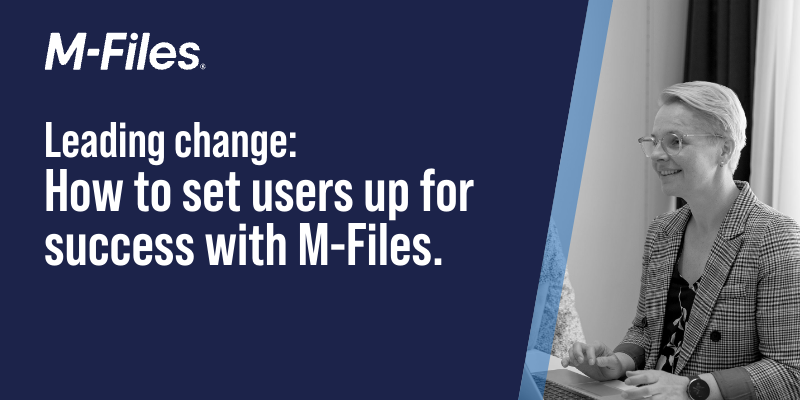When you have made the decision to roll out M-Files in your organization, you should clearly communicate your goals to everyone involved and engage the future end users of the system from the very beginning. Making sure that people understand what is going to happen and why is just as important as the actual technical implementation of the system. Taking M-Files into use means that there will be changes in the way people conduct their daily tasks, and you are called upon to lead this change. We'd like to offer you some insights into how you can guide your end users to have a positive outlook on M-Files.
Communicate the Key Facts
On a general level, explain what M-Files is and what it will be used for. Give an estimate of when M-Files will be taken into use.
Establish the Vision
Share what benefits you expect to get to your organization from M-Files, and how you envision M-Files will make work easier for the everyday user. For example, are there certain pain points in your processes that you plan to eliminate by taking M-Files into use?
Open a Line of Dialogue
Explain who people can reach out to, and how, if they have questions at this early stage. It's also a good idea to set up a regularly updated repository of information about the M-Files project, for example on an Intranet page. On this kind of page, you can collect answers to the most frequently asked questions.
Most likely you will need to repeat information and use multiple channels to ensure that everyone is aware of the implementation project and its goals.
The way in which we adopt new technology varies significantly from one individual to another. Some of us are excited about new technology and are eager to give it a try right away, whereas others are inherently more skeptical. The key is to empathize with different user personas, regardless of your own outlook on technological innovations.
Communicating why M-Files will be implemented and what that means for the end users ensures that you have laid out a solid foundation for the adoption of M-Files to take place. This way everyone has the knowledge of what M-Files is and what it is for, and can start their training to learn the required skills to use M-Files.
For more information on how you can help your users adopt M-Files, check out our guide on the M-Files User Journey and our Best Practices for Establishing a Champion Network.


